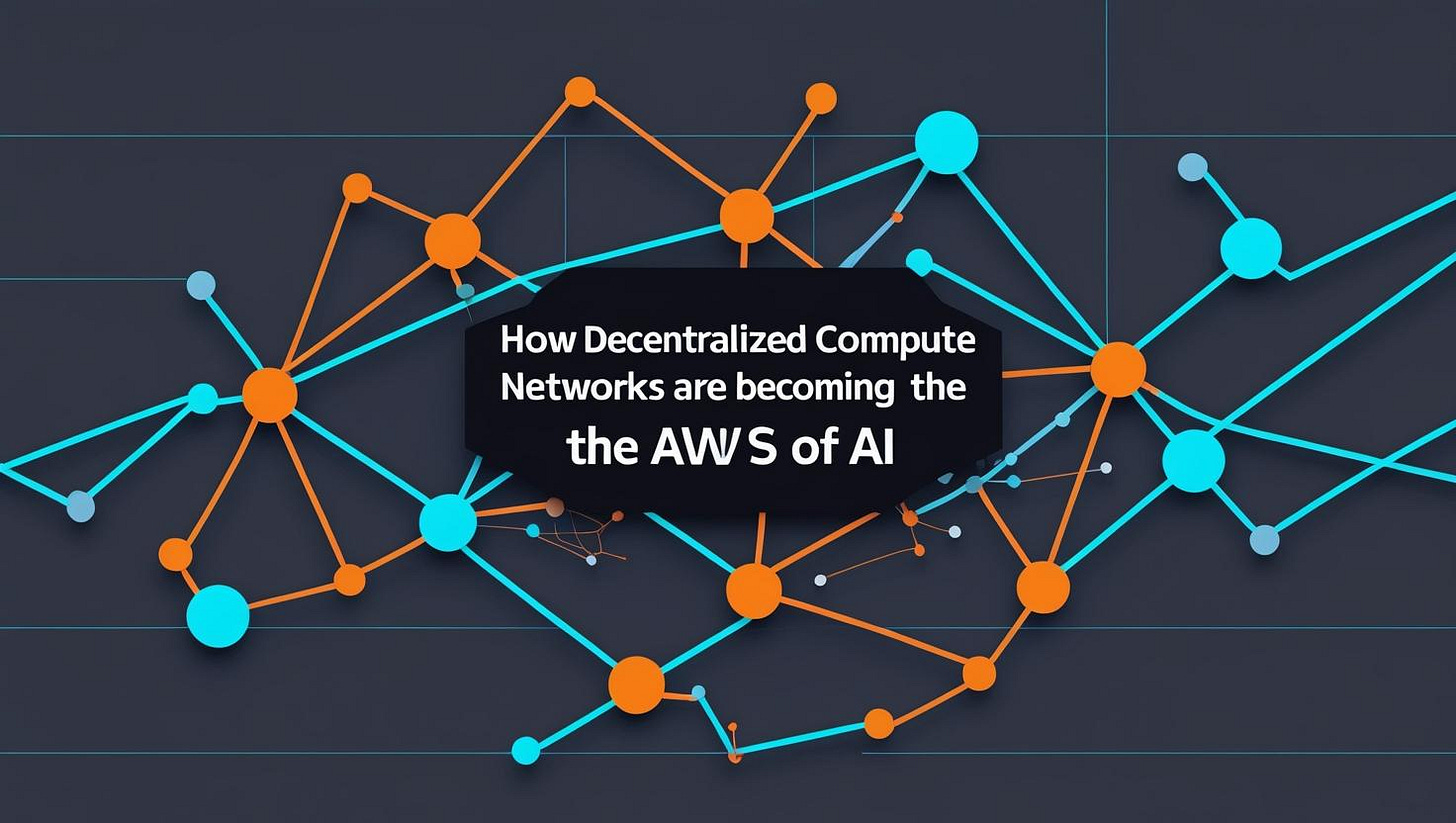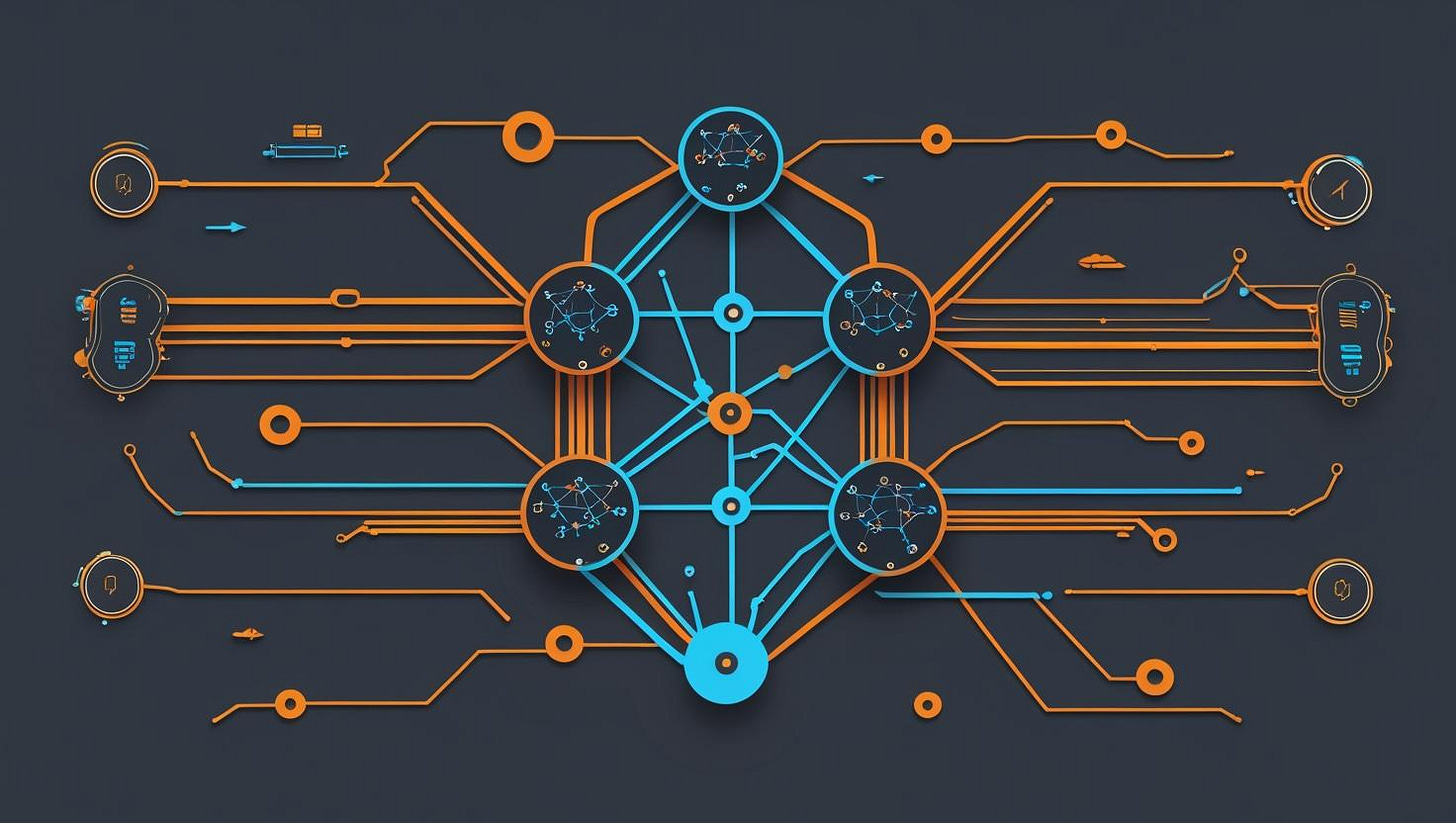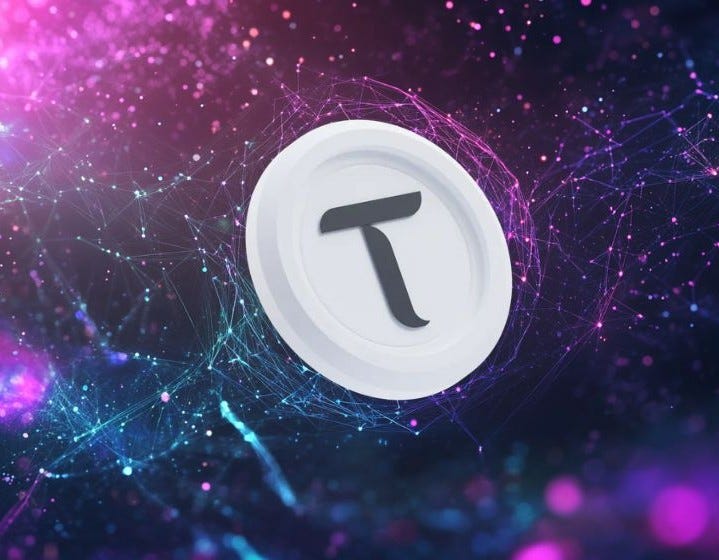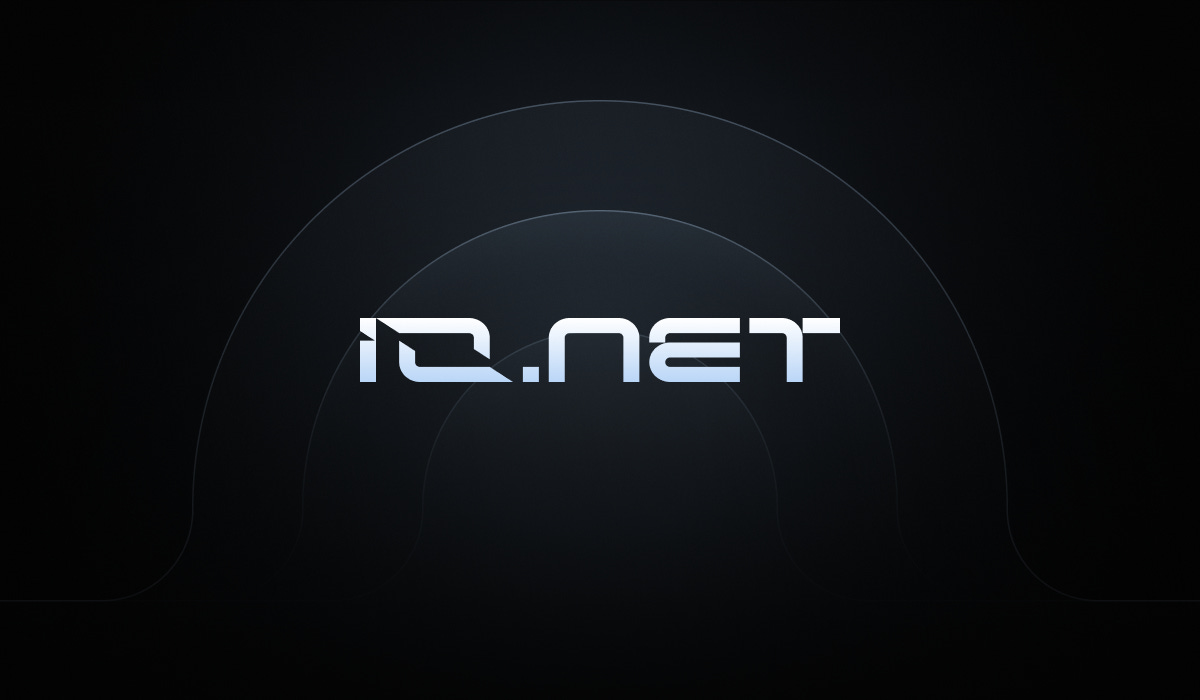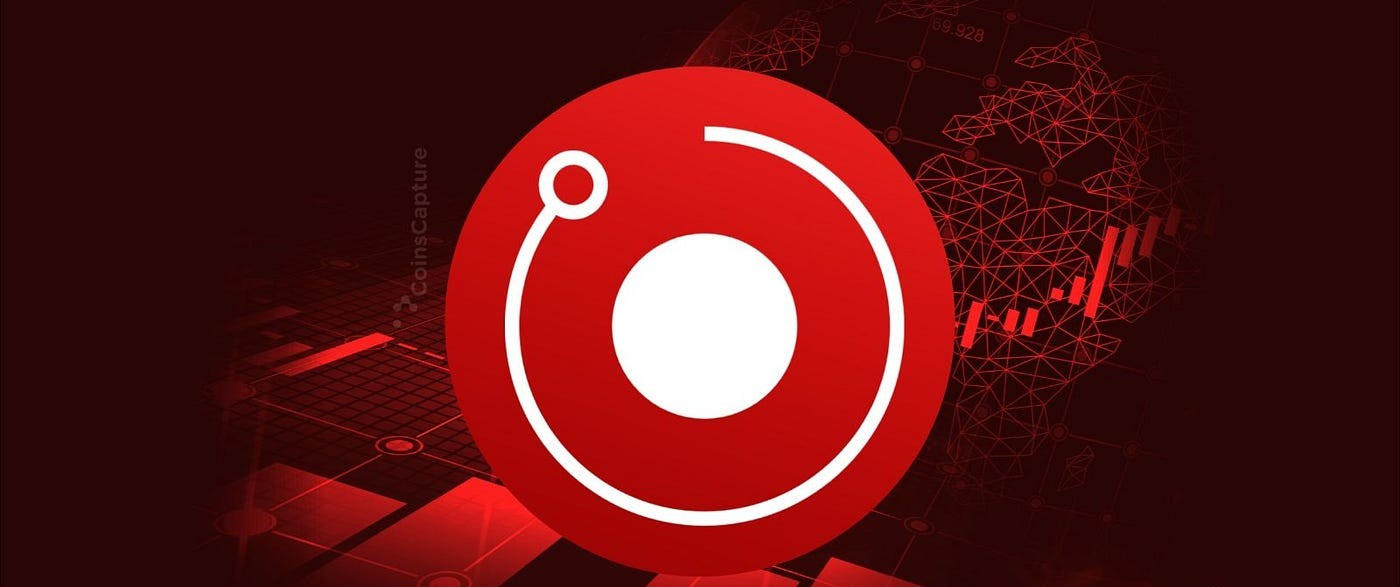The Hidden Layer: How Decentralized Compute Networks Are Becoming the AWS of AI.
Inside the infrastructure quietly powering the next generation of AI agents, apps, and autonomous systems.
Premium Brief — July 2025
Why Compute Markets Are the Real AI Bottleneck
Every AI demo you see — from ChatGPT to AutoGPT, SuperAGI to custom LLM apps — relies on one critical resource: compute.
Not content.
Not data.
Compute.
And it’s scarce.
Nvidia GPUs are expensive. Cloud credits vanish fast. Even startups backed by serious capital have waitlists for compute access.
Now imagine trying to build an open, decentralized, AI-powered internet — where thousands of autonomous agents and ML models run permissionless Ly across chains.
You can’t do it with AWS alone.
Enter: the decentralized compute layer — the AWS of Web3 AI.
This is the hidden layer that nobody talks about, but everyone depends on.
And it’s forming faster than most people realize.
What Is Decentralized Compute?
At its core, decentralized compute means:
Idle devices (GPUs, CPUs) rented out via crypto incentives
Smart contracts match buyers (AI tasks) with sellers (hardware owners)
Payment, verification, and scheduling handled permissionlessly
Instead of going to AWS or Azure, AI jobs go to a global marketplace of GPUs — hosted by real people and companies, paid in tokens, governed by protocol rules.
These networks offer:
Lower cost compute
Token-aligned incentives
Censorship resistance
Scalable access beyond corporate quotas
Let’s break down the top three protocols actually executing on this vision:
1. Bittensor (TAO) — The Intelligence Coordination Layer
What it is:
A decentralized network where machine learning models train and serve tasks — with token-based reward signals determining which models contribute the most value.
Think: a blockchain-native Kaggle, where model performance earns rewards.
How it works:
Network consists of “subnets” — each hosting specific ML tasks (e.g., translation, vision, inference, embeddings)
Each subnet has validators + miners (model runners)
TAO token is used to incentivize, rank, and govern model performance
Metrics (as of July 2025):
40+ live subnets
500M+ API calls per month across inference tasks
14K+ TAO-staked validators
TAO price: ~$305
Market cap: ~$6.1B
Scaling Path:
TAO 2.0 to introduce cross-subnet composability (agents using multi-model chains)
Planned integration with modular L2 rollups for faster job routing
AI labs joining to offer premium fine-tuned models on open terms
Narrative Alpha:
Bittensor is becoming the protocol layer for LLM liquidity — model outputs as composable primitives.
2. io.net (IO) — The Permissionless GPU Marketplace
What it is:
A Solana-based marketplace for connecting GPU suppliers (miners, labs, gaming PCs) to AI workloads in need of compute.
Think: Uber for GPUs — except you get paid in $IO and don’t need to talk to a cloud provider.
How it works:
Users submit ML workloads via io.net’s orchestration interface
Jobs get routed to available GPU clusters
Verification + performance tracked onchain
$IO used for payments, job collateral, and staking
Metrics (as of July 2025):
300,000+ GPU devices onboarded
25,000+ active jobs/month
Inference cost: ~35–60% cheaper than AWS
Partnerships: TensorFlow, Hugging Face integration, DePIN alliance
Market cap: ~$950M
Scaling Path:
Solana L2 expansion via Firedancer and rollup compatibility
Onboarding of smartphone GPU clusters (Qualcomm partnership rumored)
Launch of AI-native job SDK for real-time agents and bots
Narrative Alpha:
io.net is the first platform that lets LLM agents buy compute on demand — no account, no permission.
3. Render (RNDR) — GPU Power for AI + 3D Workloads
What it is:
A decentralized GPU rendering network originally built for 3D animation — now expanding into AI/ML inference workloads.
Think: a high-fidelity compute backbone bridging graphics and intelligence.
How it works:
GPU node operators provide rendering power and inference support
Jobs submitted through Octane and AI SDK
RNDR tokens used for job payment + priority scheduling
Metrics (as of July 2025):
80,000+ GPUs on the network
200+ AI clients using Render for model serving (stable diffusion, vision, robotics)
RNDR price: ~$11.20
Market cap: ~$4.2B
Scaling Path:
Major Hollywood and AI startup onboarding (cross-domain compute)
Move to Ethereum L2 (Arbitrum Orbit) in progress
Hybrid LLM + 3D rendering agents being tested for gaming, simulations
Narrative Alpha:
Render is uniquely positioned for multimodal agent training — vision × LLM × animation.
Infrastructure Deep Dive: Marketplace Design & Token Economics
Let’s zoom in on what really makes these protocols work — and investable.
Marketplace Design:
Each of these networks tackles the classic problem of supply-demand matching under crypto-native constraints.
Key primitives:
Proof of availability: Is your hardware online and ready?
Proof of quality: Did the GPU complete the task within latency bounds?
Proof of work performed: Was the job’s output valid, verified, and delivered?
This is harder than it sounds — AI jobs are complex, large, and time-sensitive.
Each protocol uses different strategies:
Bittensor ranks models based on output value (reputation-weighted)
io.net uses Solana’s speed + onchain reputation scores
Render combines offchain rendering metrics + crypto payment finality
Token-Based Scheduling:
Tokens aren’t just payment.
They’re used to prioritize, govern, and optimize usage.
$TAO: Staking aligns incentives; validators control subnets; access routes via bonded stake
$IO: Users pay $IO to schedule jobs; suppliers stake to boost visibility
$RNDR: Jobs priced in RNDR; large holders get access priority and governance weight
This creates token utility loops:
More jobs → more token demand
More token stake → better job access
More suppliers → cheaper pricing
The Downside Risks (And How to Hedge Them)
Let’s be real: these aren’t risk-free.
Challenges:
Verification is still imperfect
Legal/regulatory scrutiny around “AI work marketplaces”
Token dilution risk (emissions models need refinement)
Centralization of job routing (relies on SDKs and APIs)
Hedges:
Diversify across projects (e.g., TAO + IO + RNDR)
Watch GitHub commits, not just Twitter hype
Track ecosystem adoption: who's actually deploying?
Where This Is Going (2025–2027 Forecast)
GPU Pools Will Be Commoditized
Just like liquidity in DeFi, compute liquidity will become the base layer for AI deployment.
Winners: io.net, Render
Wildcards: Akash, Hyperbolic
Protocol-Owned Compute Will Arise
Some DAOs will start buying hardware to run workloads themselves — skipping intermediaries and owning margin.
Winners: Projects with agent-native logic (Autonolas, Olas DAO)
Wildcards: DAOs with surplus treasury + no burn
Agents Will Be the Main Buyers
Not humans, not devs. But autonomous agents — requesting inference, executing trades, coordinating DAOs.
Winners: Protocols that can serve micro-transactions, 24/7, low-latency.
Projects to watch: Ritual, Ora, Giza, SuperAGI
Regulatory Arbitrage Will Matter
Compute marketplaces will thrive in regions friendly to “AI labor markets.” Watch LATAM, Southeast Asia, Eastern Europe.
Winners: TAO (global subnet neutrality), IO (low-cost infra countries), Render (global GPU brokers)
Closing Thought: The Real AWS of AI Won’t Be One Company
Just like DeFi didn’t replace TradFi with a single bank…
Decentralized compute won’t crown one AWS killer.
Instead, it will look like this:
Bittensor → Coordination + model value routing
io.net → Marketplace + dynamic GPU scheduling
Render → Multimodal + vision-native compute
Giza, Ora, Ritual → Secure + verifiable inference
Modular rollups → Execution layers for agent logic
Data DAOs → Fuel for fine-tuning
This is the real stack. The “hidden layer” that powers the future of crypto × AI coordination.
You won’t hear about it on CNBC.
But you’ll feel it when your agent executes a yield strategy without asking permission — and settles the job on a GPU halfway across the world.
- Deep Brief



